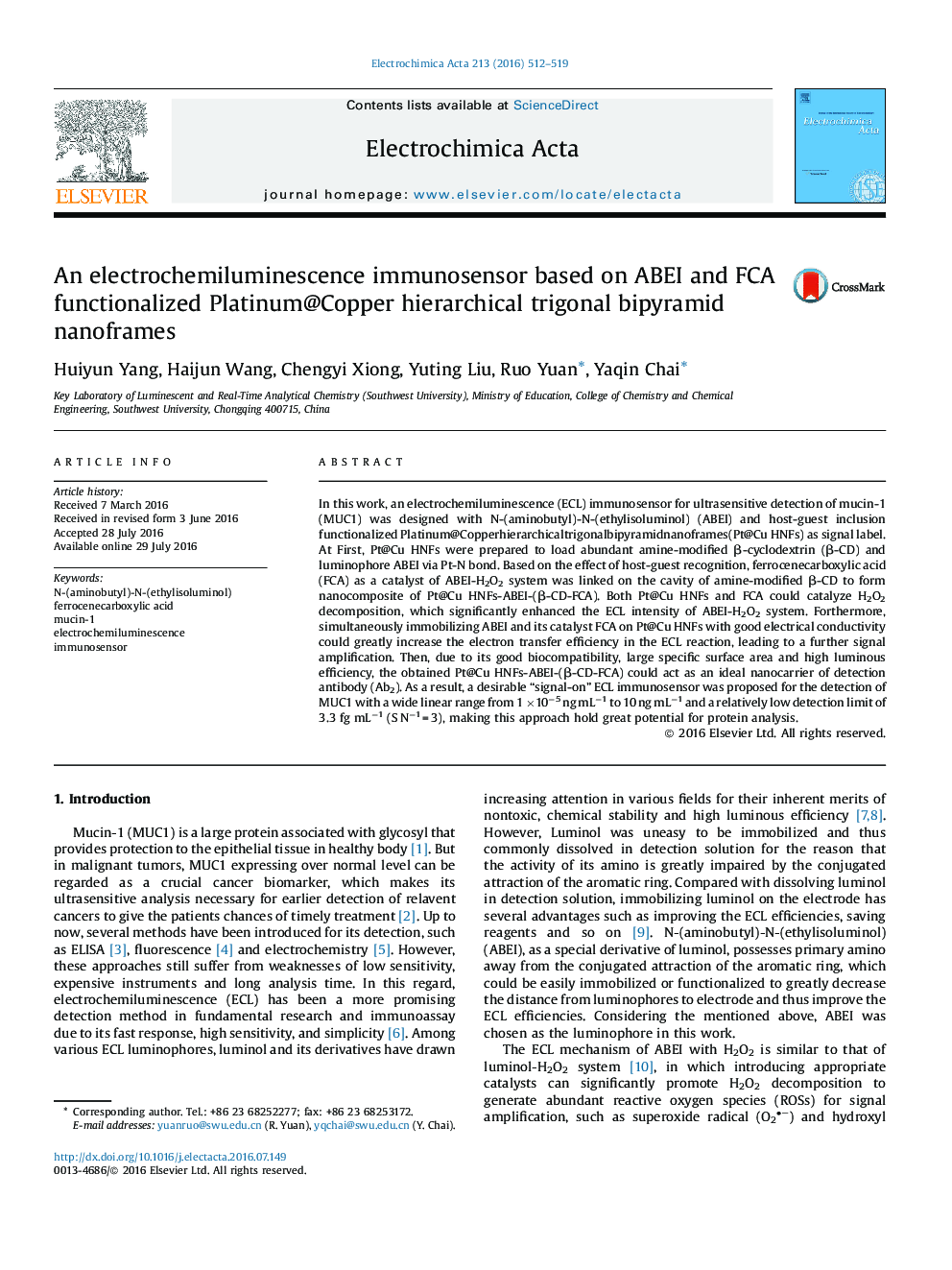| Article ID | Journal | Published Year | Pages | File Type |
|---|---|---|---|---|
| 6605785 | Electrochimica Acta | 2016 | 8 Pages |
Abstract
In this work, an electrochemiluminescence (ECL) immunosensor for ultrasensitive detection of mucin-1 (MUC1) was designed with N-(aminobutyl)-N-(ethylisoluminol) (ABEI) and host-guest inclusion functionalized Platinum@Copperhierarchicaltrigonalbipyramidnanoframes(Pt@Cu HNFs) as signal label. At First, Pt@Cu HNFs were prepared to load abundant amine-modified β-cyclodextrin (β-CD) and luminophore ABEI via Pt-N bond. Based on the effect of host-guest recognition, ferrocenecarboxylic acid (FCA) as a catalyst of ABEI-H2O2 system was linked on the cavity of amine-modified β-CD to form nanocomposite of Pt@Cu HNFs-ABEI-(β-CD-FCA). Both Pt@Cu HNFs and FCA could catalyze H2O2 decomposition, which significantly enhanced the ECL intensity of ABEI-H2O2 system. Forthermore, simultaneously immobilizing ABEI and its catalyst FCA on Pt@Cu HNFs with good electrical conductivity could greatly increase the electron transfer efficiency in the ECL reaction, leading to a further signal amplification. Then, due to its good biocompatibility, large specific surface area and high luminous efficiency, the obtained Pt@Cu HNFs-ABEI-(β-CD-FCA) could act as an ideal nanocarrier of detection antibody (Ab2). As a result, a desirable “signal-on” ECL immunosensor was proposed for the detection of MUC1 with a wide linear range from 1 Ã 10â5 ng mLâ1 to 10 ng mLâ1 and a relatively low detection limit of 3.3 fg mLâ1 (S Nâ1 = 3), making this approach hold great potential for protein analysis.
Related Topics
Physical Sciences and Engineering
Chemical Engineering
Chemical Engineering (General)
Authors
Huiyun Yang, Haijun Wang, Chengyi Xiong, Yuting Liu, Ruo Yuan, Yaqin Chai,
